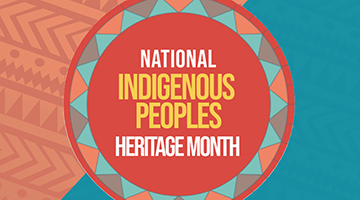Throughout November the nation pauses to reflect on the history, culture and contributions of Indigenous people. A connecting thread has been a tragedy. The Indigenous people of the Americas were marginalized, brutalized and oppressed for centuries, and yet have maintained their traditions, language, and beliefs despite the odds. In the United States, the month-long observance began in 1990 during George H.W. Bush’s presidency. It offered an alternative to those who regarded the traditional Thanksgiving Day as something else – The National Day of Mourning. Colonization had a devastating impact on Native Americans, who inhabited the continent long before Europeans claimed it as “discovered.” The past can’t be changed, but we can understand matters differently today.
November also marks the harvest season in many indigenous cultures. It is a time when native communities come together to celebrate their connection to the land, express gratitude for nature’s abundance, honor traditional agricultural practices, and for families to connect. Recognizing Indigenous Peoples Month during this time allows for the inclusion of cultural activities and events related to their traditions and folklore.
All of that provides a platform for education, dialogue, and reflection on the ongoing struggles for indigenous rights, land sovereignty, and cultural preservation.
Lenape means “the people.”
The Lenape (Lenapehoking) people, also known as the Delaware Indians, were the original inhabitants of Manhattan and the surrounding areas. Indigenous people, primarily in the Western Hemisphere, were organized into hundreds of tribes or nations for 13,000 years before European settlers arrived. Natives to that Land were brutally and violently displaced under 400 years of Dutch and European colonialism. Many institutions acknowledge this pain, with a simple statement before public gatherings:
“The Land on which this building stands is part of the ancient homeland and traditional territory of the Lenape people. We respect the Lenape people’s past, present, and future and their continuing presence in the homeland and throughout the diaspora.”
Lenape people had a long-standing presence in Manna-hatta, today’s Manhattan, and were part of Algonquian-speaking tribes. They lived in semicircular, barks-covered, small houses in villages along lands that are now New York, New Jersey, Pennsylvania, and Delaware. They practiced a combination of hunting, fishing, and agriculture. They made their clothes from what they could find in their environment. Manhattan provided everything they needed to live in harmony. Native villages had a deep spiritual connection to the land and believed in living in peace within nature.
In the 16th and 17th centuries, European explorers began to arrive in the Lenape lands. Displacement soon followed. In 1626, the Lenape “sold” Manhattan land to Peter Minuit, a Dutch, for $24. For many years, the enduring story was that the settlers secured a fascinating deal. In truth, we learned in subsequent inquiry that it was a misunderstanding. Native Americans did not understand what selling land was because, in their culture, people don’t own land that belongs to everyone. You share it. The Dutch did not care to contribute and build a stronger community but to take it away! They claimed the land for themselves. Understanding history has consequences; getting the stories right or wrong creates today’s consciousness. What we know builds our national identity, ethnic pride, and respectful relationships with others to build a better future for everyone.
“ My grandparents never talked
about theory, decolonization, or
post-colonial this or that.
They talked about
good times and bad times. “
“Not Just Anybody Can Have One” by Paula Gunn Allen.
In 1660, New Amsterdam became British New York, and by the early 1700s, most of the Lenape people had moved away. They could not tolerate the diseases the colonizers brought with them from Europe. They had no immunity or resistance to smallpox. Many died. The historical journal of the Lenape people says they merged with many other clans and tribes all over the Americas to avoid being systematically exterminated.
After the constitution was endorsed in 1788, New York City became the first capital of the United States of America. On April 30, 1789, George Washington became the first president of the “new country,” claiming for itself the right to cleanse and colonize.
November is also a time to highlight the outstanding achievements of Indigenous people. Test pilot and NASA astronaut Nicole Aunapu Mann became the first Native American woman in space in 2022. Deb Haaland, interior secretary in the Joe Biden administration, became the first Indigenous person to serve as a Cabinet member in 2021. ; N. Scott Momaday, Pulitzer Prize-winning novelist, was awarded the National Medal of Arts in 2007.
This post was written by our Library Peer Ambassador Kat Gawin,
Learn More:
See our main book display near the entrance of the Library!
National Museum of the American Indian in New York
1 Bowling Green, New York, NY 10004
https://americanindian.si.edu/explore/exhibitions/newyork
New York State Museum
Cultural Education Center
222 Madison Avenue
Albany, NY 12230
Listen to the: Native American Poets Playlist’ For Indigenous People’s Day, At Harvard’s Peabody Museum
Native Land Digital source:

